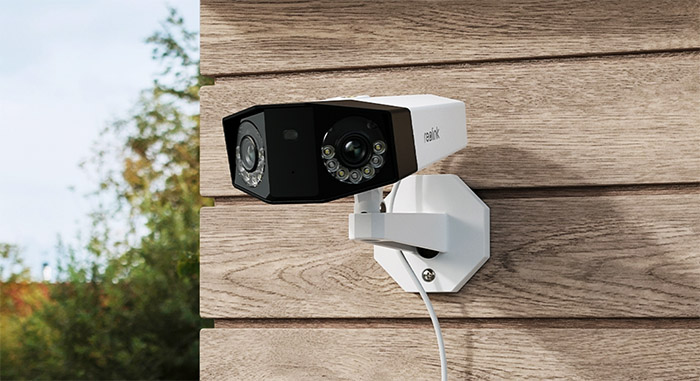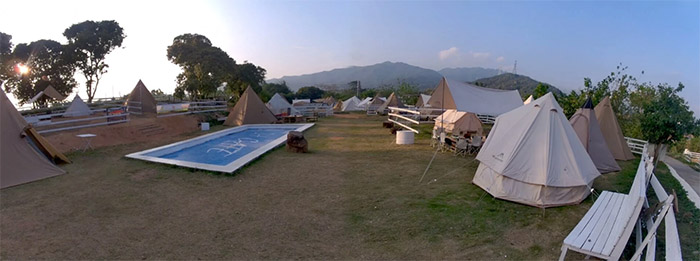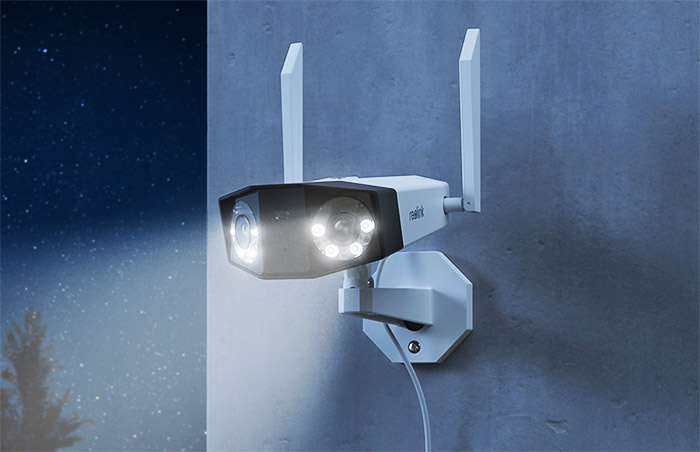A year after Reolink took everyone by surprise with the launch of a dual-lens camera that could cover far more space and even combine the two streams into one footage, it has now launched the second generation of the device called the Reolink Duo 2. And, as you may expect, it seems to be an improvement in almost every respect.
The Reolink Duo used the smart motion detection technology to accurately tell when a person or a vehicle was in front of the lens, but the Duo 2 seems to take it to another level, adding pet detection into the equation as well. At the moment, it’s a beta feature, but I expect it to be a full-fledged function very soon.

The resolution was also improved from the 2K (2560 x 1440p) of the previous camera gen to the now 4K (4608 x 1728p) and the objective is also better, going from 4 to 8-megapixel, suggesting that there is some improvement for the night vision as well. The manufacturer says that it’s the same color night vision which uses a spotlight and 8pcs IR infrared LEDs to help detect any movement during the night.
One other significant improvement is how wide the viewing angle is.
While the Reolink Duo could already cover a lot of space (150 degrees), the Duo 2 has a wider viewing angle, reaching 180 degrees. When I tested the Duo camera, the algorithm behind stitching the two videos together did a fairly good job, but I could still spot some distortions where one lens ended and the other started (in the middle of the video). And, while I haven’t yet tested the Reolink Duo 2, I did check some photos that the manufacturer provides and they looks significantly better.

The footage seemed seamlessly attached in the middle and pretty much no distortions anywhere. If this turns out to be the actual camera performance, then kudos to Reolink, but I will either test it myself or wait for other users to confirm that the algorithm is indeed that much better than what we saw with the previous generation. Furthermore, the Reolink Duo 2 does come in various configurations, but not as many as the first gen since there is only a PoE and a WiFi model.
The interesting thing about the PoE model is that it can connect to an NVR, the same as the first gen Duo. And, when I tested the Duo camera, it was a bit of a pain because it needed to use two channels. This has changed with the Duo 2 because it seems that the programmers managed to combine the two images together (while keeping the 4K resolution intact) and to offer it to the NVR as a single stream, thus occupying a single channel, leaving other channels for other cameras.

Everything else seems to be the same as with the first generation, so expect the support for SD cards up to 256GB, the two-way communication and the remote access using the mobile application, which is useful if you use the camera with or without an NVR. Also, the WiFi version is not limited only to the 2.4GHz band, as it happens with the large majority of similarly-priced cameras.
You can connect the Reolink Duo 2 to the 5GHz band as well, just be aware that you’re going to see the best performance when installing the camera closer to the router. That being said, if you want to check more info about Reolink Duo 2, just go to the official website since the device is already available on the market.

Mark is a graduate in Computer Science, having gathered valuable experience over the years working in IT as a programmer. Mark is also the main tech writer for MBReviews.com, covering not only his passion, the networking devices, but also other cool electronic gadgets that you may find useful for your every day life.
